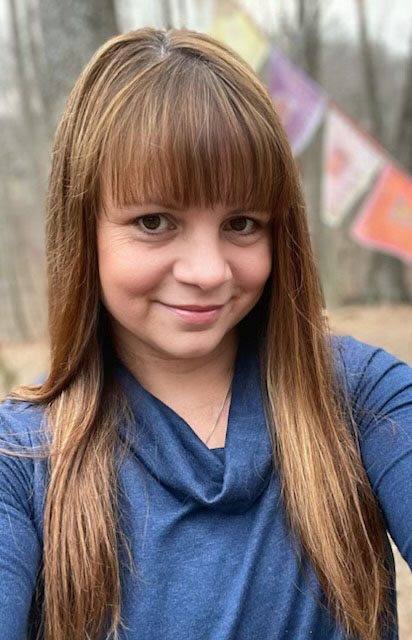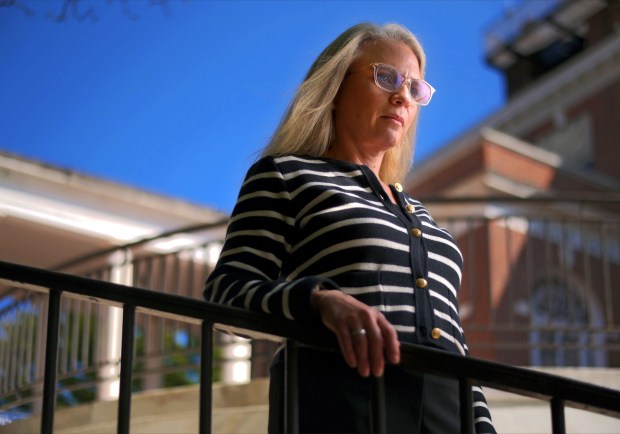Every day, psychotherapist Kerry Hospelhorn gets up at 6 a.m., sips her morning coffee and checks text messages to see which of her 20 clients need mental health support. It can be one, or as many as 10.
All students in Baltimore County schools; there is always a list of teenagers to talk to. Their fears run the gamut, from school to social and family affairs. And Hospelhorn, who is employed by Talkspace, a national digital mental health platform, is there to listen.
“There are children who say they want to get to know each other better, and others who have severe social anxiety and symptoms of depression. It’s a very good range,” he said. “They’ll say, ‘I have to speak in front of the class and I’m nervous,’ or ‘ I don’t know how to tell my parents about dropping a class.’ Some are applying to college and are afraid their grades aren’t good enough.
Talkspace, which began in 2012, partnered with Baltimore County Public Schools last spring in a two-year, $1.8 million contract that allows more than 32,000 high schoolers free virtual mental health support through a network of licensed Maryland therapists in the Talkspace program. Each student is matched with a therapist, and given links to self-help tools, and promised total confidentiality – although, upon enrolment, an emergency contact is required.
Other area school systems have also recently added virtual therapy programs and apps. This year, Baltimore City partnered with Hazel Health, a California firm, to provide free telehealth services, with one-on-one consultations, to students of all ages — but only from the client’s home with parental permission.
Through Prosper, another digital health app, students in Anne Arundel County can now access their teachers, self-care tools and links to mental health resources. Frederick County has implemented an independent therapy app called Basecamp for middle and high school students. The program is billed as confidential, although parents of clients under 18 “can request access to their child’s data at any time.”
School systems in Carroll, Harford and Howard counties still have select in-school counseling and crisis hotlines available to all Maryland students.
Clearly, children are hurting. On September 6, at Joppatowne High in Harford County, a 16-year-old student shot and killed a 15-year-old with a handgun. On August 14, at Franklin High in Baltimore County, a 16-year-old student-athlete collapsed and died during football practice.
The 2022 Youth Risk Behavior Survey of Maryland high school students, commissioned by the state health department, revealed sobering statistics. During the previous 12 months, the survey found, 3.9% of students reported being threatened, or injured, by someone with a weapon (gun, knife or club) on school grounds. During the same period, 17.9% of students had “seriously considered” trying to commit suicide, 14.3% had made plans to do so, and 4.9% had actually tried to commit suicide.
The number of suicides in Baltimore County is higher: 20% of students said they had considered it, 17.1% made plans and 5.5% tried to end their lives.
“It’s pretty nasty data; it’s scary,” said Andra Broadwater, chair of the health and safety committee for the Baltimore County PTA Council. Moreover, he says, many brick-and-mortar mental health providers are overbooked today, and “find [support] being a teenager is especially challenging. Not everyone is qualified to treat children. “

Hospelhorn, 51, a Harford County resident and therapist for 27 years, six of them with Talkspace, said she doesn’t see suicidal ideation with many teenagers. “If someone says, ‘I hate my life,’ I’ll say, ‘Tell me more about it.’ I’m going to take a moment to catch my breath. Then we’ll continue.”
If necessary, he will bring other therapists on board.
“Most kids don’t want to die,” Hospelhorn said. “They’re just overwhelmed and want to do better.”
Last spring, on the Talkspace app, Baltimore County students participated in more than 2,800 therapy messaging sessions with doctors and exchanged 17,000 chat messages with them, said Patricia Mustipher, director of student support services for county schools. More than two-thirds (69%) of survey respondents reported that the session was helpful. Data for the first quarter of the current academic year will be available in November.
Talkspace clinicians cannot prescribe medication for students.
“If the therapist believes that the teen has a higher acuity concern, such as needing a psychiatric evaluation or possible medication, they will recommend supplements. [outside] services,” said Jeannine Feyen, director of communications for Talkspace.
Today’s teenagers feel that the ground is always shifting under their feet, psychologists stress.
“We are in the midst of a crisis of adolescent mental health; Children feel a lot of uncertainty that previous generations did not,” said Alison Papadakis, director of clinical psychology studies and lecturer at Johns Hopkins University. For adolescents, social media, cyber-bullying and the rise of AI all create stress in the present and fear for the future, he said – and many teenagers lack the coping tools they have acquired before, but for the closure of schools during the COVID-19 .
“During the pandemic, our kids were isolated from their peers and their mental health went down, down, down — and we’re still coming out of it,” Broadwater said.
“Kids are missing out on building personal skills during COVID,” Papadakis said. “They bear permanent scars from that time, but may not realize it.”
The pandemic has curbed office sessions and triggered a boom in virtual therapy, especially for teens who stay at home. Now, with that footing, do nontraditional methods like Talkspace spell the future for high school students?
“There is an unprecedented level of suicidal thoughts among our youth, and great concern about violence in their schools,” said Nikole Benders-Hadi, chief medical officer of Talkspace. “Our goal is to connect with students before they are in crisis [mode] and help them build their skills.”
Such a platform “definitely fills a gap,” said Broadwater, who knows students who have reached out via Talkspace. “We don’t have school psychologists in every building and, for [guidance] Counsellors, mental health is just one thing they focus on – so having an app where kids can access support is just a plus.
“As a parent, if my child is in crisis, I don’t care how it’s delivered, I just want help.”
Traditional clinicians recommend tread lightly.

“[Telehealth] is still developing, but we are moving in that direction – although we have to be careful,” said Papadakis, an expert in adolescent psychopathology. Research shows that virtual platforms help to eliminate common problems, such as depression and anxiety. But more serious problems, such as bipolar disorder and budding schizophrenia, is another problem, he says. One risk is that if telehealth fails to help teenagers, “they can overgeneralize and think that.” [all forms of] Therapy doesn’t work, in general, or for them, in particular.
People with attention-deficit/hyperactivity disorder (ADHD) can also watch during videoconference therapy, says Papadakis:
“Kids with focus issues may not engage [telehealth] treatment because there are many tasks and not paying as much attention – which [ironically] That’s why they seek therapy in the first place. “
On the plus side, health apps can give therapists a glimpse into a client’s daily life, perhaps with siblings screaming or parents fighting in the background.
“This allows us to parachute into the patient’s world, something you won’t get in an office visit,” he says. “The format can be filtered in the context that we need to understand what is happening at home.”
At the same time, looking at a tablet or cell phone can cause therapists to miss nonverbal signals (vibration, wheezing) that are harder to read than people. Privacy is another concern.
“There is worry [during virtual sessions] about who walks into the client’s room, or who has an ear to the door,” Papadakis said. “Sometimes, therapists have students flip their phone around 360 degrees to make sure it’s safe to talk.”
In general, health experts agree that it is easier for teenagers to confide in a therapist they have never met, on a virtual platform, than for their parents to do so.
“Personally, I would feel weird talking to someone I’ve never met, but that’s not a problem for this generation than it is for us,” Papadakis said. “I’m worried that the teenage strategists reach out in moments of ‘crisis,’ for help via sms, will not be able to give themselves to learn trading tools, or handle the strategy themselves. They can help at that time, but they also learn [to use a crutch] instead of trying to manage difficult situations on their own.”
#Talkspace #therapists #find #Baltimore #County #students #overwhelmed